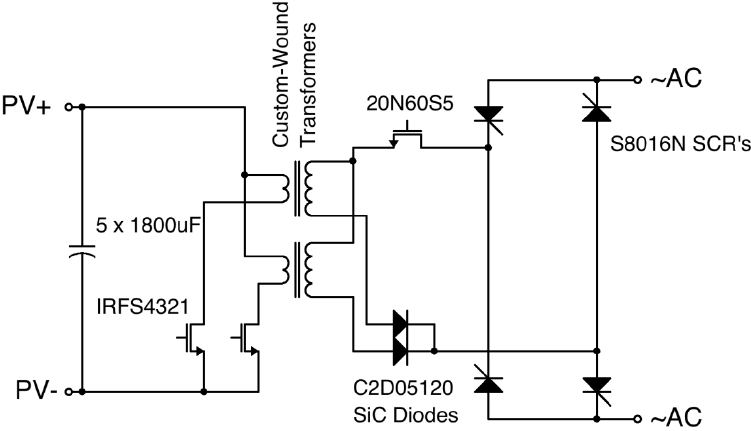My biggest gripe with my grid tie system has been losing my solar in a power outage. Last Summer looking through my spare parts I realized there are enough cables and Y connectors to branch off 1/2 my panels upstream of the micro inverters. Running that branch(2800W) or 2 in my case, 10 panels per branch to a pair of 5048 inverters. I would take the output of those 5048s and run them into the input of an manual generator transfer switch. The 5048s would be off until a power outage then I would connect the DC to them through a switch and power up the units then flip the switches on the circuits of the transfer box. Supplying the 5048s inputs with generator and battery bank. In my mind this would work if a car takes out a pole on a sunny day knocking out power to the house or some other weather related outage. Completely aware that turnkey systems are out there that do all this but I already have a working 12KW micro inverter system and didn’t want to start from scratch. There may be something fundamentally wrong with my logic but that is why I’m here in the Danger zone section.
Jim in PA
Jim in PA




